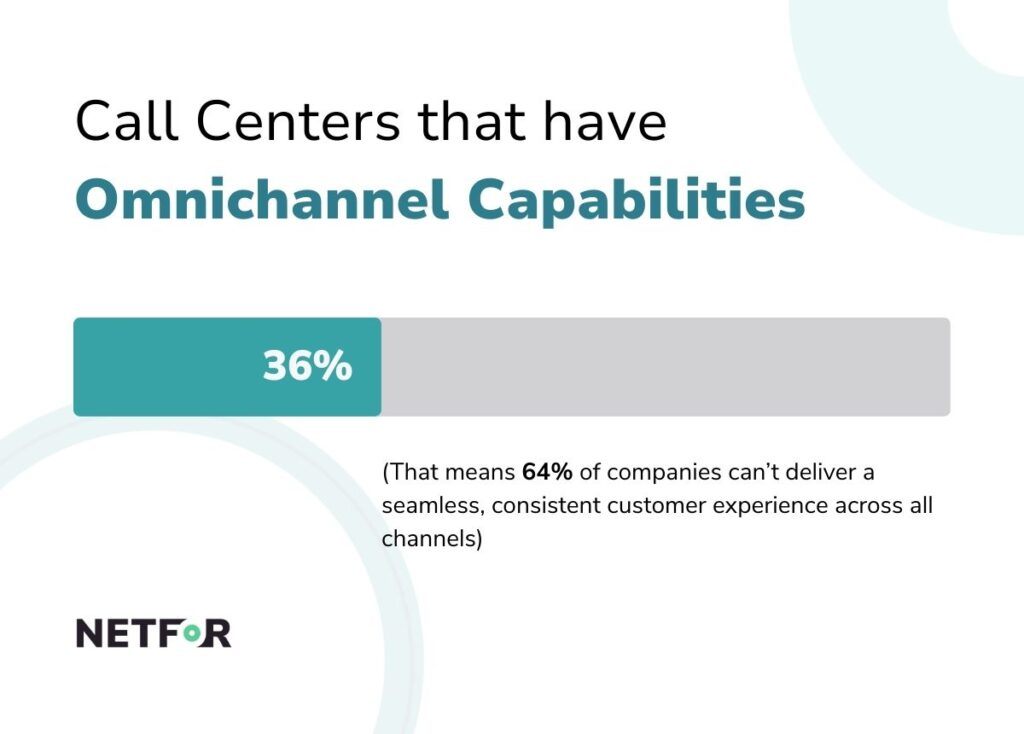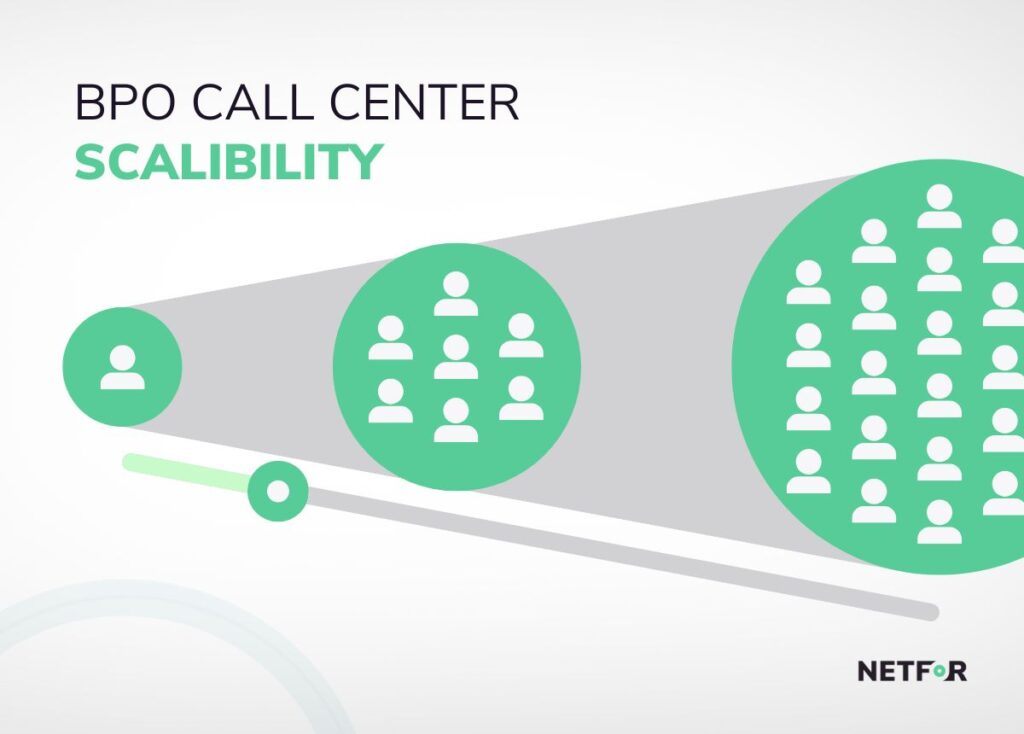Call center management has evolved far beyond the basic task of staffing agents and answering phones. In 2025, effective call center management represents the strategic intersection of people, processes, and technology, a critical discipline that directly impacts customer satisfaction, operational efficiency, and business growth.
Many organizations struggle with persistent challenges:
- High agent turnover rates: Increase recruitment and training costs, disrupt service continuity, and erode institutional knowledge.
- Inconsistent service quality: Leads to uneven customer experiences, reduced satisfaction, and potential brand damage.
- Complex task of integrating new technologies: Challenges in adopting advanced tools while preserving the personal, human touch that customers expect.
- Operational hurdles: Together, these issues can turn what should be a competitive advantage into a costly operational burden.
This comprehensive guide presents actionable call center management tips, proven best practices, and real-world results. It demonstrates how strategic call center operations can improve customer satisfaction, reduce costs, and scale effectively without sacrificing quality. Through detailed analysis of industry benchmarks and case studies from successful implementations, you’ll discover the framework for running a successful call center that drives measurable business outcomes.
The Current State of Call Center Management in 2025
AI as an Agent’s Co-Pilot
Modern call center management leverages artificial intelligence not as a replacement for human agents, but as a powerful enhancement tool. AI applications now support both operational efficiency and customer experience through real-time coaching, automated call summaries, and predictive analytics that help managers optimize staffing and resource allocation.
The most significant impact comes from AI-powered customer self-service options, including visual IVR systems and sophisticated chatbots that handle routine inquiries like password resets, order tracking, and basic troubleshooting. This strategic deflection means human call center agents now focus exclusively on complex, high-value interactions that require empathy, critical thinking, and advanced problem-solving skills.
However, this shift fundamentally changes the agent’s role. Today’s contact center agents sometimes function as crisis managers, brand ambassadors, or sophisticated problem-solvers. Calls that graduate from the AI IVR to human agents are inherently more challenging, emotionally charged, and business-critical than ever before.
Cloud-Based Platforms Enable Flexibility
The migration to Contact Center as a Service (CCaaS) platforms has become essential for effective call center management. These cloud-based solutions provide the scalability and flexibility needed to support remote and hybrid workforces while ensuring business continuity through geographically distributed infrastructure.
CCaaS platforms eliminate the significant capital expenditure and maintenance requirements of traditional on-premise systems while providing the agility to scale operations up or down based on fluctuating demand patterns.
Omnichannel or Nothing
True omnichannel integration remains a critical challenge for call center management teams. While customers expect seamless experiences across voice, email, chat, SMS, and social media channels, only 36% of contact center leaders report having foundational omnichannel capabilities.

The remaining organizations operate with siloed communication channels, creating customer frustration when interactions lack context and continuity. Effective call center management requires unified platforms that provide agents with complete customer journey visibility, eliminating the need for customers to repeat information across channels.
The Agent Experience Disconnect
Despite recognizing that emotional intelligence, empathy, and adaptability are now paramount agent skills, 64% of organizations fail to provide emotional intelligence training, and 59% don’t offer the continuous coaching required for success in AI-enhanced environments. This disconnect between technology investment and human development creates a destructive cycle of agent burnout, technology mistrust, and ultimately, compromised customer experience.
Core Challenges in Running a Successful Call Center
High Turnover Creates Hidden Costs
Agent attrition remains one of the most damaging challenges in call center operations. Annual turnover rates typically range from 30% to 45%, with some organizations experiencing rates as high as 75%. The financial impact extends well beyond the $10,000 to $15,000 cost of recruiting and training each replacement agent.
Hidden costs include:
- Loss of institutional knowledge: Valuable expertise and insights leave with departing agents.
- Temporary service quality degradation: Performance dips during the ramp-up period for new hires.
- Customer disruption: Inexperienced agents struggle to resolve issues efficiently, impacting satisfaction.
- Self-perpetuating negative cycle: Poor tools and inadequate knowledge management lead to longer handle times, increased agent stress, higher turnover rates, and declining overall service quality.
Fluctuating Call Volumes Demand Strategic Planning
Call center management must account for volume fluctuations that can swing by 200% to 500% between peak and off-peak periods. These variations stem from seasonal trends, marketing campaigns, product launches, and unforeseen external events.
Inaccurate forecasting creates two equally problematic scenarios. Understaffing results in extended customer wait times, higher abandonment rates, and declining satisfaction scores. Conversely, overstaffing to prepare for potential spikes can inflate operational costs by 15% to 25%, wasting valuable resources on idle capacity.

Service Quality Consistency Requires a Systematic Approach
Maintaining consistent service quality across all interactions represents a fundamental call center management challenge. Inconsistency often stems from siloed systems that prevent agents from accessing complete customer history, forcing customers to repeat information and extending handle times.
The burden of quality assurance, monitoring calls, evaluating performance, and providing coaching requires significant resources while creating tension between oversight needs and agent empowerment goals.
Compliance as Competitive Advantage
Call centers serving regulated industries must navigate strict compliance requirements, particularly PCI DSS for payment processing and HIPAA for healthcare-related communications. PCI DSS violations can result in fines ranging from $5,000 to $100,000 per month, while HIPAA penalties can reach $1.5 million per violation category.
Rather than viewing compliance as merely a cost of doing business, successful call center management positions these capabilities as competitive differentiators that enable service to high-value, regulated industries.
Call Center Management Best Practices for 2025
Implement a Balanced KPI Scorecard
Effective call center management depends on monitoring both customer-centric and operational metrics to maintain a balanced view of performance and customer experience.
Customer-focused KPIs include:
- Customer Satisfaction (CSAT): Measures satisfaction with a specific interaction, typically on a 1–5 scale.
- First Call Resolution (FCR): Tracks the percentage of issues resolved on the first interaction without follow-up.
- Net Promoter Score (NPS): Gauges overall customer loyalty and likelihood to recommend the company.
- Customer Effort Score (CES): Evaluates how easy it was for the customer to get their issue resolved.
Operational call center metrics include:
- Average Handle Time (AHT): The total time spent on an interaction, including talk time, hold time, and after-call work.
- Average Speed of Answer (ASA): How quickly calls are answered after entering the queue.
- Service Level: The percentage of calls answered within a set time frame (e.g., 80% in 20 seconds).
- Abandonment Rate: The percentage of callers who hang up before speaking to an agent.
The most successful call center operations maintain world-class FCR rates of 80% or higher, with industry leaders achieving rates above 90%. Similarly, top-performing centers like Netfor answer 97% of calls within 20 seconds, significantly exceeding the traditional 80/20 standard (80% of calls answered within 20 seconds).
Adopt an Agent-First Approach
Call center management best practices prioritize continuous coaching, emotional intelligence training, and clear career development paths. This investment in human capital directly addresses the agent experience disconnect while improving service quality and reducing turnover.
Organizations that implement comprehensive agent development programs see measurable improvements in both employee satisfaction and customer experience metrics. The key lies in matching technology investment with equivalent human development initiatives.
Align Technology with Business Outcomes
Successful call center strategies avoid rushing into AI adoption without clear operational planning. Instead, they systematically align each technological tool with specific business outcomes. For example, AI chatbots deflect simple requests, while Real-Time Interaction Guidance (RTIG) systems coach agents during complex interactions.
This strategic approach ensures technology enhances rather than complicates the customer experience while providing agents with tools that genuinely improve their effectiveness.
Implement Centralized Knowledge Management
A comprehensive, AI-enhanced Knowledge Management System (KMS) serves as the foundation for consistent, high-quality service delivery. Centralized knowledge bases enable agents to access accurate, up-to-date customer information instantly, improving both FCR rates and reducing average handle times.
Organizations with robust knowledge management systems report 30% reductions in call volume through improved self-service options and 22% decreases in average handle time, directly breaking the negative cycle of poor tools leading to agent frustration and turnover.
When to Outsource Your Call Center (and How to Do It Right)
Market Growth Indicates Mainstream Adoption
The global call center outsourcing market, valued at over $100 billion in 2024, is projected to reach between $163 billion and $259 billion by the early 2030s, growing at approximately 9% to 10.2% annually. This growth reflects the mainstream adoption of outsourcing as a strategic business practice rather than a cost-cutting measure.
Strategic Drivers for On-shore Outsourcing
Organizations choose to outsource to on-shore call center operations for several compelling reasons beyond cost reduction.
- 24/7 coverage capabilities enable global market competition without the operational complexity of round-the-clock staffing.
- Access to specialized expertise and advanced technology platforms provides capabilities that many organizations cannot cost-effectively develop internally.
- Cost efficiency remains significant, with companies typically realizing 40% to 60% savings on operational costs through strategic outsourcing partnerships.
These savings stem not only from labor cost optimization but also from avoiding facility, technology, and management overhead expenses.
Addressing Common Outsourcing Concerns
Prospective clients often raise valid concerns about outsourcing call center operations. Addressing these concerns directly builds trust and demonstrates the value of a well-managed outsourcing partnership.
Common concerns and how to address them:
- Cost concerns: Use a Total Cost of Ownership (TCO) analysis to compare the fully loaded costs of in-house operations (salaries, benefits, facilities, technology, and management) with outsourcing fees.
- Brand control fears: Mitigate these through detailed Service Level Agreements (SLAs) and comprehensive performance monitoring systems that give clients oversight and transparency.
- Service quality worries: Provide performance benchmarks showing that top-tier outsourced operations achieve:
- CSAT scores of 85% to 90%
- FCR rates on par with the best in-house teams
- Data security concerns: Implement robust compliance protocols, including end-to-end encryption, third-party certifications (e.g., PCI DSS, HIPAA), and contractual protections like Business Associate Agreements (BAAs) for healthcare clients.
By proactively addressing these objections with data, process transparency, and proven performance metrics, providers can position outsourcing to a BPO call center as a safe, strategic, and cost-effective solution.
The Netfor Advantage: Proof in Performance
Performance Metrics That Exceed Industry Standards
Netfor’s performance metrics consistently exceed world-class industry benchmarks across multiple client verticals. The company maintains a 92% overall First Call Resolution (FCR) rate and delivers 97% of technical support calls answered in under 20 seconds, surpassing both the traditional 80/20 standard and the more aggressive 90/15 targets pursued by industry leaders.
Real-World Impact Through Client Success Stories
Crisis-Level Scalability: During a crisis requiring rapid expansion of unemployment benefit support, Netfor compressed its standard 60-day client onboarding process to just 10 days for the Indiana Department of Workforce Development. This demonstrated exceptional agility in managing sudden volume surges while maintaining service quality during high-stress situations.
Operational Consolidation: A Fortune 500 retailer with over 4,500 store locations achieved over $2.5 million in cost savings over five years by consolidating multiple vendor relationships into a single partnership with Netfor. This consolidation improved service consistency while reducing operational complexity and costs.
Strategic Process Improvement: The Indiana Department of Revenue engagement extended beyond standard call handling to include workforce management analysis and process improvement. A dedicated analyst reviewed five years of historical data to improve staffing forecasts and developed new tools that enhanced service level accuracy.
Technology and Process Differentiators
Netfor’s proprietary Knowledge Management System represents a significant competitive advantage in addressing industry-wide knowledge management challenges. The platform houses thousands of customer-specific knowledge articles and employs Real-Time Interaction Guidance to analyze caller sentiment while providing instant access to relevant solutions.
This customer-centric approach has produced measurable results: 30% reduction in call volume through improved self-service capabilities and 22% decrease in average handle time. These improvements directly address the negative operational cycles that plague many call center operations.
Netfor’s people-centric approach emphasizes comprehensive agent training using customizable modules that include client-specific content, ensuring both technical proficiency and the soft skills required for complex customer interactions. This integrated approach addresses the agent experience disconnect while maintaining high service standards across diverse industry verticals, including retail, software, government, quick service restaurants, security, manufacturing, and managed service providers.
Building Excellence Through Strategic Integration
Effective call center management in 2025 requires the strategic integration of advanced technology, robust processes, and comprehensive people development. Organizations that achieve sustainable success recognize that investing in knowledge systems and agent capabilities is essential for breaking negative operational cycles and creating competitive advantage.
The evidence from industry-leading organizations demonstrates that it is possible to scale call center operations without sacrificing service quality. The key lies in treating call center management as a strategic discipline rather than a necessary operational function, focusing on measurable outcomes that directly increase customer satisfaction and business growth.
For organizations ready to transform their customer service operations, the path forward involves careful assessment of current capabilities, strategic alignment of technology investments with business outcomes, and commitment to comprehensive agent development programs. Whether through internal optimization or strategic outsourcing partnerships, the goal remains consistent: creating exceptional customer experiences that drive long-term business success.
Ready to elevate your call center operations to world-class performance levels? Contact Netfor today for a comprehensive consultation and performance audit that will identify specific opportunities for improvement in your customer service strategy.

